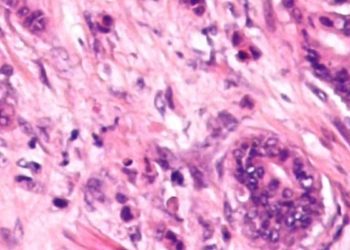Risks associated with a Trial of Labor after Cesarean Delivery (TOLAC) [Classics Series]
1. Uterine rupture occurs in less than 1% of women undergoing TOLAC.
2. The absolute risk of permanent neurological impairment in infants born to women undergoing TOLAC is <1% (0.46 per 1000 women).
Original date of publication: December 16, 2004
Study Rundown: Cesarean delivery is associated with higher morbidity and mortality than vaginal delivery. Each additional Cesarean section increases a woman’s risk for abnormal placentation and other complications. In efforts to minimize morbidity associated with Cesarean delivery, in 1990 the United States Public Health Service set a goal Cesarean delivery rate of 15% along with a goal vaginal birth after Cesarean rate of 35%. Accordingly, the incidence of vaginal delivery and vaginal trial of labor after Cesarean (TOLAC) increased. Subsequently, reports of increased incidences of uterine rupture, intrapartum fetal demise and perinatal morbidity among women undergoing TOLAC demotivated providers to recommend TOLAC. In turn, the rate of vaginal birth after Cesarean dropped. Thus, the U.S. rate of vaginal birth after Cesarean fluctuated from a nadir of 3% in 1981 to a peak of 28.3% in 1996 then back down to 13% in 2002. Yet, only anecdotal data was available to guide the pendulum swing; no prospective studies characterizing risks associated with TOLAC existed as of 2002 (see background reading).
The present work assessed the risk of adverse maternal and perinatal outcomes associated with TOLAC. Findings demonstrate an acceptably low rate of uterine rupture and similarly low rate of neonatal neurologic injury. This landmark study is the first to characterize risks associated with TOLAC and remains one of the most frequently cited research studies in obstetrics. Limitations include selection bias whereby women willing to undergo TOLAC may have been more likely to present with a favorable cervix and thus more likely to achieve vaginal delivery. This may bias results toward the null. Lack of information on use of specific prostaglandin agents disallowed assessment of which were associated with uterine rupture. Additionally, the study was not powered to detect differences in maternal mortality.
Click to read study in The New England Journal of Medicine
Background reading: U.S. Dept of Health & Human Services: Vaginal birth after Cesarean (VBAC)
Study Author, Dr. Alan Peaceman, MD, talks to 2 Minute Medicine: Northwestern University School of Medicine; Chief, Division of Obstetrics and Gynecology-Maternal Fetal Medicine.
“This study is one of the largest observational trials performed assessing maternal and perinatal complication rates associated with TOLAC. Findings demonstrate a very low risk of both uterine rupture and infant morbidity and highlight an increased rupture risk with prostaglandin use. Results allow for more appropriate and complete patient counseling and discourage use of prostaglandins in women with a uterine scar.”
In-Depth: [prospective cohort]: The Cesarean registry pooled data from nineteen academic medical centers in the National Institute of Child Health and Human Development Maternal-Fetal Medicine Units (MFM-U) Network. Trained research personnel collected data from patient charts at 19 academic medical centers from >30,000 women with a prior cesarean delivery and current singleton pregnancy at >=20 weeks gestation from 1999 through 2002. Outcomes of interest included uncommon and rare maternal and fetal complications, including uterine rupture and infants with hypoxic-ischemic encephalopathy. The study was planned to take 3 years but a decline in the rate of trial of labor after Cesarean during the study period necessitated extending data collection for an additional year.
Uterine rupture occurred in <1% (124 out of 17,898 women) of women undergoing TOLAC. Compared to those in spontaneous labor, women whose labor was induced (OR:2.86, CI:1.75-4.67) or augmented (OR:2.42, CI:1.49-3.93) were more likely to experience rupture. In the incidence of rupture, permanent and severe neurological impairment resulted in 5.6% (7 out of 124 infants). Among all women undergoing TOLAC, the absolute risk of permanent neurological impairment was <1% (0.46 per 1000 women). Rate of intrapartum fetal demise was similar between groups (p>0.4 for all).
Image: PD
©2012-2014 2minutemedicine.com. All rights reserved. No works may be reproduced without expressed written consent from 2minutemedicine.com. Disclaimer: We present factual information directly from peer reviewed medical journals. No post should be construed as medical advice and is not intended as such by the authors, editors, staff or by 2minutemedicine.com. PLEASE SEE A HEALTHCARE PROVIDER IN YOUR AREA IF YOU SEEK MEDICAL ADVICE OF ANY SORT.






![Childhood ADHD associated with increased risk of suicide [Physician Comment]](https://www.2minutemedicine.com/wp-content/uploads/2013/03/PET-image1-e1377449984183-75x75.jpg)
